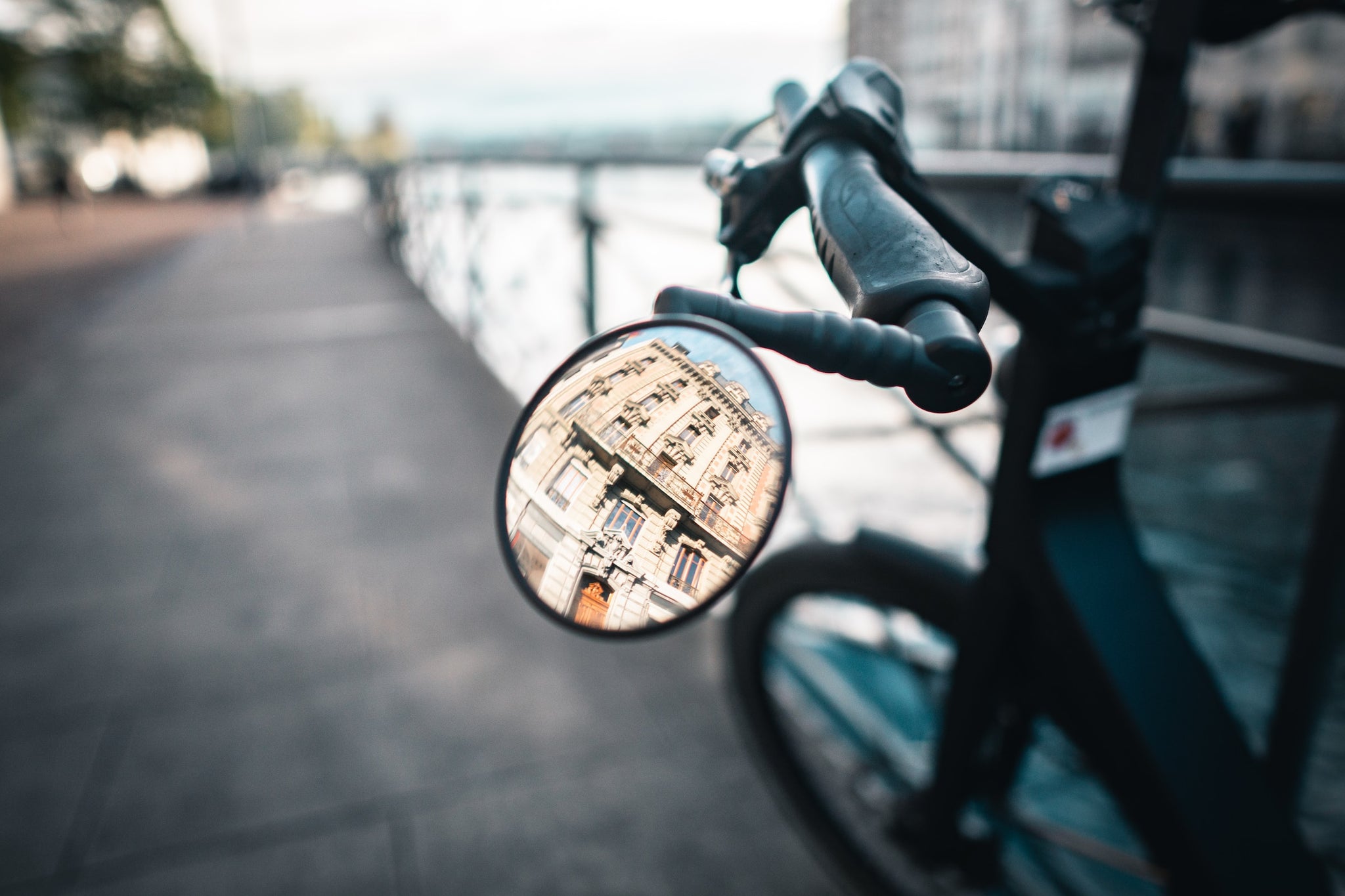Why Cycling Mirrors Are Essential for Safety (And How to Use Them)

Serious cyclists are known for getting a little attached to their favorite equipment. Whether they fall in love with a certain type of cleats or a comfortable saddle, that new riding accessory quickly becomes essential.
Few cycling components catch on as quickly as the rearview mirror, though. While many riders resisted using them in the past, once they gave it a try, they quickly learned that they couldn’t live without this critical safety piece.
It’s been almost a decade since Coach Darryl MacKenzie tried a cycling mirror for the first time, but he was an immediate convert on that first ride. Here’s why he doesn’t recommend riding without one — and some tips for how to use your cycling mirror for maximum riding safety.
How Cycling Mirrors Make You Safer
If you’re reluctant to ride with a mirror, take a moment to consider your options when you ride without one. To see behind you, you have no choice but to turn your head and torso, even removing a hand from your handlebars in some cases. This is a safety concern for several reasons.
First, it’s hard to get accurate depth perception while looking behind you and relying primarily on your peripheral vision. Second, you’re taking your eyes away from the road and what’s in front of you. Finally, looking back can throw off your balance as you have to not only turn your head but tilt your eyes down to see what’s behind you.
Any single one of those issues can cause serious safety concerns. Combine all three, and looking back on the bike becomes downright hazardous. A simple misjudgment or shift in your direction could put you in serious danger.
Cycling mirrors largely eliminate all these problems. You can keep your head pointed straight ahead, barely glancing away from the road to get a clear view of any traffic in your rear. This makes it far easier to assess the situation behind you so you know when it’s safe to take the lane or ride side by side with another cyclist — or even when you need to slow down and let another rider catch up.
“I use it to know exactly what’s behind me at all times,” says Coach Darryl. “That is very reassuring. It makes you much more confident and relaxed when you’re riding.”
Where to Put Your Cycling Mirror
Once you’ve decided to upgrade your cycling safety with a rearview mirror, you’ve got a few choices regarding where you put it. And here, the most obvious option isn’t necessarily the best one.
On Your Bike
For many riders, this is the default position. They assume that, just like the rearview and side mirrors on their car, it makes sense for the mirror to be fixed on the bike. When they think cycling mirror, they imagine the picture above.
Your bike, however, is not like your car. On the bike, a single fixed mirror is far too limiting, especially compared to the three mirrors you’d have in your car. You need the freedom to constantly assess traffic behind you, consider lane changes and prepare for turns. A single mirror on your bike doesn’t allow for that.
“I don’t necessarily want to be only able to see what is in the lane directly behind me,” Darryl explains.
On Your Helmet
A second and far safer option is to attach the mirror to the side of your helmet. With this setup, the mirror will move freely with your head, allowing you to capture a much wider view of what’s behind you.
Need to see more lanes to your left? Simply turn your head a little to the right and glance in your mirror. Need to see the right lane? Simply turn your head slightly to the left. You can still keep your eyes on the road and make quick glances to assess the situation.
That said, helmet placement does have some downsides. Because you have to clip it on the bottom of your helmet, the mirror may gradually slide down until it falls off. It’s also easy to forget it’s on there when you take off your helmet, so it may fall off when you stow it away and be easily forgotten for the next ride.
On Your Sunglasses
Coach Darryl attached his mirror to his helmet for years, but eventually decided to opt for an even better option: clipping it to his sunglasses. With this setup, you get all the same benefits of using it on your helmet without the risk of your mirror falling off or getting lost or damaged after a ride.
“It’s far easier to put on, far more secure while it’s on there, and easier to take off when your ride is done for the day,” says Darryl.
That’s why Darryl ultimately landed on his favorite type of mirror, the Take a Look Active Cycling Mirror. It’s designed to attach to your glasses and comes in two different arm lengths so you can get the best view based on how well you see up close. You can even buy a helmet adaptor if you prefer that option.
Tips for Using Your Mirror
Before you hit the road with your mirror, it’s important to be sure you can use it properly:
- Try it out before you ride: The mirror can be a little jarring the first time. Be sure you try it out around the house or on a hike before you use it on the bike. This will help your eyes and brain get accustomed to using it (and looking around it when needed).
- Use flash looks: Take quick glances to capture the image, then look ahead at the road and process what you just saw. These “flash looks” will help you stay safe from behind without getting distracted from what’s in front of you.
- Buy some extras: Once you’re used to using a mirror, you’ll feel lost without one on the road. Keep some spares on hand so you always have one for the ride.
- Store it in an old eyeglasses case: This handy method will keep your mirror from getting lost or broken in your bag. Darryl keeps his case with his helmet after a ride so his mirror is right there waiting for him.
It’s also worth noting that, after many rides with a mirror, your left eye may become dominant and cause some issues with your vision. Darryl experienced this after about eight years of riding with a mirror, and he was able to correct the problem by putting a second mirror on his right side while he was hiking or out walking his dog (not cycling). This helped him use his right eye in a similar way and restore balance in his field of vision.
Don’t Knock It ‘Till You Try It
Still skeptical? You’re certainly not alone. Many cyclists have been hesitant to try mirrors. And even those who do may find the experience a bit odd on the first try. But stick with it. In Darryl’s experience, those who try it a few times soon find they can’t live without their trusty mirror.
“When people make the effort to do this, it’s almost guaranteed success,” he says.
You’ve got a lot to gain, and maybe only $20 or $30 to lose. Why not give it a shot?
Mirrors aren’t the only cycling equipment that can change your ride. Check out our top five pieces of essential cycling equipment.
For more insights from Coach Darryl, visit his website.
Photo by Anton Shakirov on Unsplash





